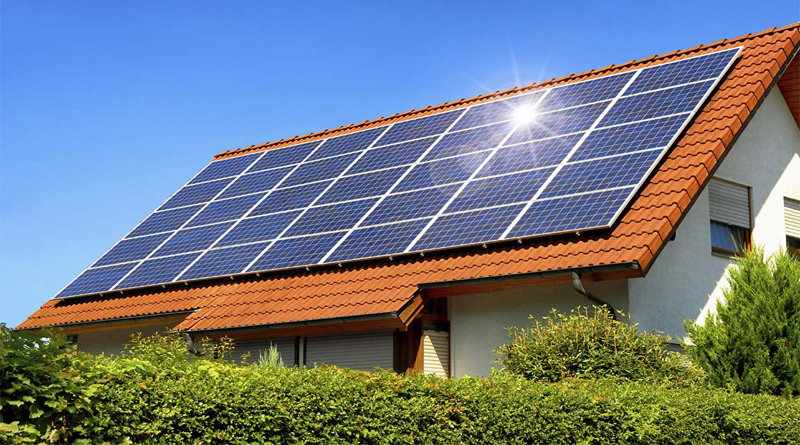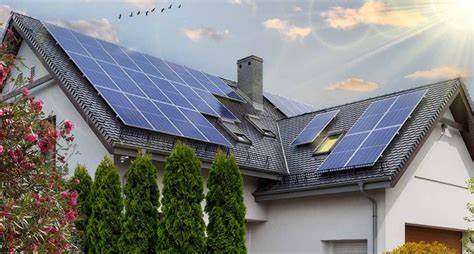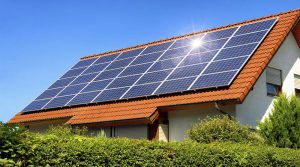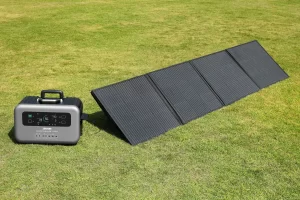Innovative Technologies for Solar Energy Systems: Enhancing Site Energy Self-Sufficiency
From high-efficiency solar panels to smart tracking systems, the latest technological advances make it possible for sites, whether residential, commercial, or industrial, to achieve substantial energy self-sufficiency. But how do these innovations really work, and are they practical for everyday use? Let’s dig into the most exciting advances, highlighting some key factors to consider if you’re looking to maximize the potential of solar power stations.
High-Efficiency Solar Panels: The Powerhouse of Solar Technology
The first step to maximizing solar power output is the choice of solar panels. Standard panels have a decent efficiency, but advances in high-efficiency panels—those that can convert more sunlight into usable energy—are making waves. Panels with efficiency rates over 22% are now common, allowing users to generate more power with less space. This is particularly useful for locations with limited space, as well as in power stations aiming to meet higher energy demands.
Key Benefits:
- More power per square meter– especially beneficial for small or rooftop installations.
- Longer lifespan– high-efficiency panels often come with extended warranties, offering years of reliable energy.

For users in densely populated areas or places with high energy needs, the benefits of high-efficiency panels are substantial. However, if you’re in a particularly sunny area, a more affordable panel might still deliver sufficient energy to meet your needs.
Solar Tracking Systems: Following the Sun’s Path
Imagine this: you’ve set up your solar system, but sunlight only hits your panels directly for part of the day. With solar tracking systems, this issue is minimized. Trackers adjust panel angles throughout the day to follow the sun’s path, capturing sunlight more effectively and significantly boosting output. This is a great solution for sites at higher latitudes, where the sun’s position changes more drastically over the year.
There are two types of solar trackers commonly used:
- Single-axis trackers, which move panels horizontally, are simpler and cheaper.
- Dual-axis trackers, which adjust both horizontally and vertically, can capture even more sunlight, especially useful in commercial setups.
When to Use a Solar Tracker:
- Ideal for ground-mounted or rooftop installations with open space.
- Best for sites where energy demands are high and space is limited.
These trackers can improve power generation by up to 25% for single-axis and 40% for dual-axis systems, making them worth considering if you’re looking to optimize energy production.
Integrating Battery Storage for Maximum Energy Self-Sufficiency
High-efficiency panels and tracking systems are fantastic, but they don’t address one key challenge: energy storage. For true self-sufficiency, a battery storage system is essential. Today’s solar batteries can store excess energy generated during peak sunlight hours, providing power during the evening and on cloudy days.
Incorporating battery storage can be particularly useful for solar energy stations aiming to operate off-grid. With a properly configured battery setup, sites can remain powered during outages and reduce dependence on grid energy, leading to long-term savings and increased resilience.

Huijue Group’s Contributions to Energy Independence
At the forefront of solar technology, Huijue Group provides systems that integrate advanced tracking and storage solutions, making solar energy accessible and practical for both small-scale and commercial projects. With high-quality panels, versatile tracking options, and customizable storage, Huijue Group’s solutions are designed to maximize the efficiency of solar energy and meet the unique needs of various installations.
For those interested in exploring advanced solar solutions, consider checking out Huijue Group’s energy systems. Their offerings include smart, efficient options to help your site achieve full energy independence.
Choosing the Right System for Your Needs
When it comes to boosting energy self-sufficiency, selecting the right mix of technology is crucial. Whether it’s through high-efficiency panels, solar trackers, or robust storage, tailoring a system to your location and energy requirements is the key to success. And, as technology continues to evolve, the options for achieving a self-sufficient site become more accessible than ever.
Contact us
- Email:[email protected]
- Tel: +86 13651638099
- Address: 333 Fengcun Road, Fengxian District, Shanghai
Get A Quote Now!
Related product links are available directly
Site storage products:Site storage products 归档 – (energystoragecontainer.com)
Lithium Battery:Lithium Battery 归档 – (energystoragecontainer.com)
Read more

Innovative Technologies for Solar Energy Systems: Enhancing Site Energy Self-Sufficiency
From high-efficiency solar panels to smart tracking systems, the latest technological advances make it possible for sites, whether residential, commercial, or industrial, to achieve substantial energy self-sufficiency.

Household Energy Storage All-in-One Machine: How to Choose the Right Storage Capacity
Household energy storage systems are becoming as essential as home appliances, making power outages and energy independence manageable.

Power Selection Guide: How to Choose the Right Backup Power Supply for Your Home
With unpredictable power outages and an increasing demand for reliable home backup power supplies, choosing the best option for your household is more important than ever.

Container Base Station Energy Room: Dual Play of Thermal Management and Efficiency
In today’s rapidly evolving world of energy storage, container-based energy storage solutions have become the backbone of modern power supply infrastructure. These systems are commonly used for communication base stations, smart cities, and power distribution networks, ensuring a stable power supply in edge locations.
